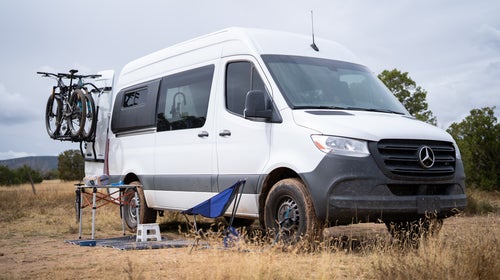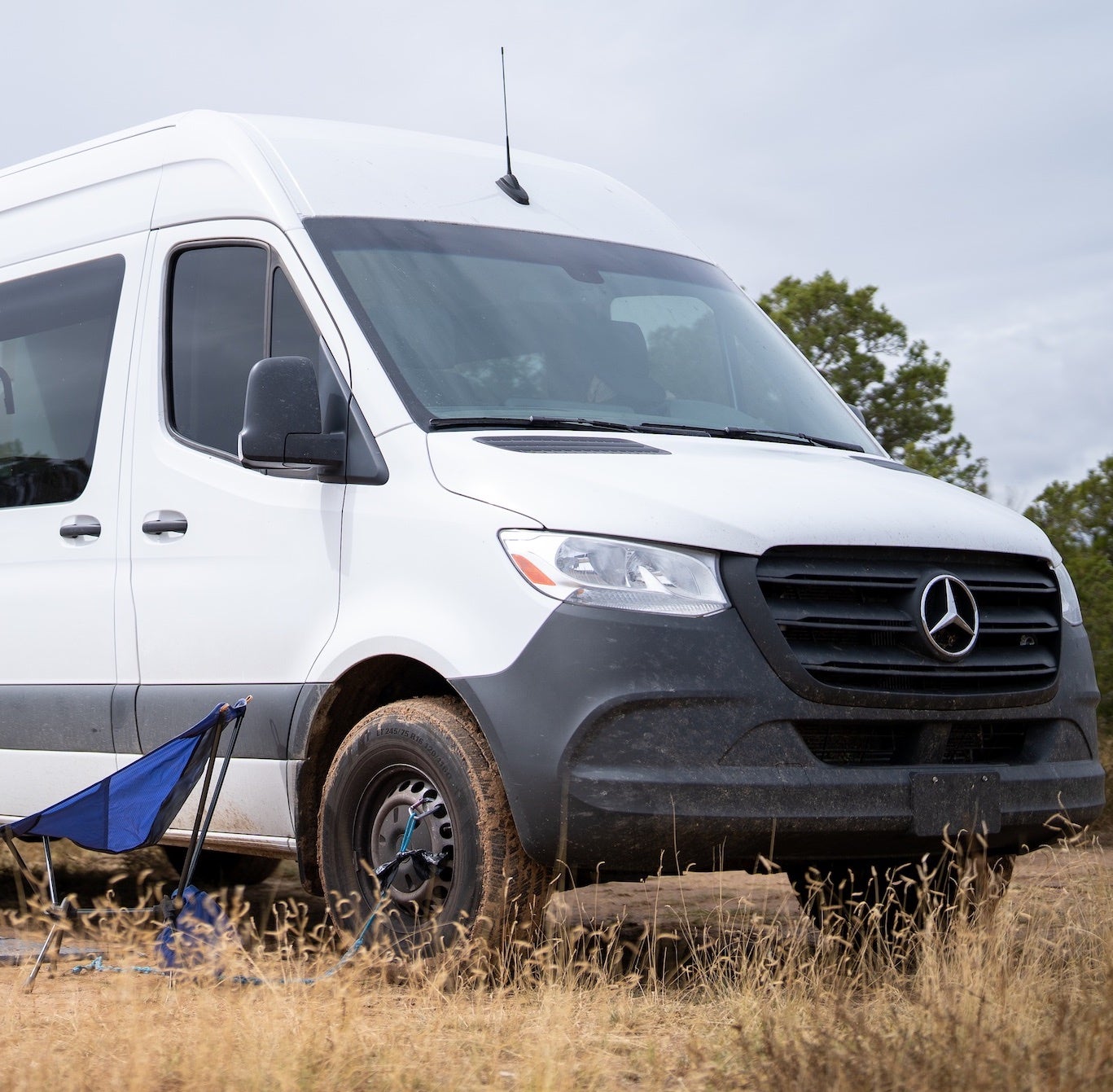In 2017, I traded in my trusty Tacoma for an unproven, barebones cargo van. I was hedging that my soon-to-be camper and its creature comforts would afford me even more—and bigger—adventures. All I had to do was build it. I’m a handy guy, and with a plan to keep things simple, I figured it’d be pretty straightforward. It wasn’t.
Turns out, it’s hard to build inside a structure with approximately zero right angles—the process ended up taking months, not weeks, like I’d hoped. But just like most great outdoor adventures, the effort was worth it in the end. That van took me, my now-wife, and our dog to just about every western state and the Baja Peninsula. But the process left me thinking there had to be a better way to convert a van for first-time DIYers. Five years later I got to find out when I did another conversion on a new van. This time, the resources in the DIY landscape had improved dramatically, and with the help of a few online materials and products, I achieved better results, in far less time, than I ever thought possible before. Considering a DIY conversion of your own? These are the insights and resources I found most helpful.
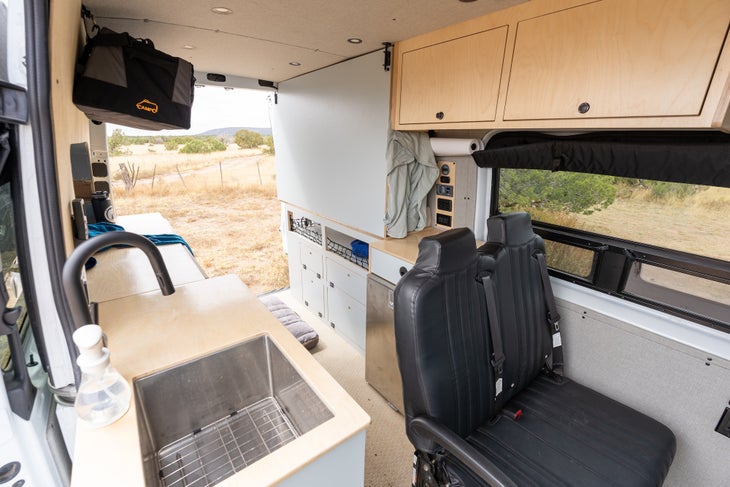
Learn From the Pros
During my first build, forums were about the only place to turn to for ideas, information, and real-world insights from fellow DIYers. But more often than not, hours of scrolling left me with more questions than answers—all I wanted was for someone credible to tell me what to do.
“There’s so much analysis paralysis when it comes to van building because there are so many different opinions out there,” says Sid Beck, co-founder of , a Santa Barbara–based custom van upfitter. Beck, who manages the shop’s social channels, saw that reflected in the neverending stream of questions posed by Campo’s followers. He knew there had to be a better way to share more of the shop’s learnings with the community than by replying to individual comments and emails.
His ultimate solution, a ($299), launched last fall. It’s like a MasterClass, but instead of Steph Curry teaching you how to drain three-pointers, you get Campo Vans’ shop manager Isiah Brothers talking through every phase of the camper-building process. “The impetus for the course was, ‘Here’s all the tools, here’s all the answers: go build a higher-quality van than a garage builder—and do it in your own garage for less money,’” says Beck.
The course, which I took this spring ahead of my second camper-van build, was exactly what I had been looking for: authoritative, comprehensive, and actionable. From rough layout to insulation to plumbing and heating, it helped me wrap my head around every step of the process, determine the correct order of operations, and plan a more efficient project. Most importantly, it gave me the confidence to just make decisions, because the advice informing those decisions was coming from a group of pros, not an armchair engineer on a forum.
That said, the course is not a step-by-step tutorial. You won’t, for instance, learn how to build the exact galley cabinet Campo uses in its builds. Instead, you’ll gain an understanding of the tools, techniques, and skills needed to construct cabinetry that will stand up to the abuse of life inside a moving vehicle. That’s by design: Beck and the Campo team kept the information high-level so that it could serve the widest swath of DIYers possible, whether converting a brand new Sprinter, updating a 30-year-old Westfalia, or tricking out a truck camper. Should you want to replicate some of Campo’s designs, the shop sells on its website (course participants get 50 percent off digital products). And the company’s makes finding and buying the right components easy.
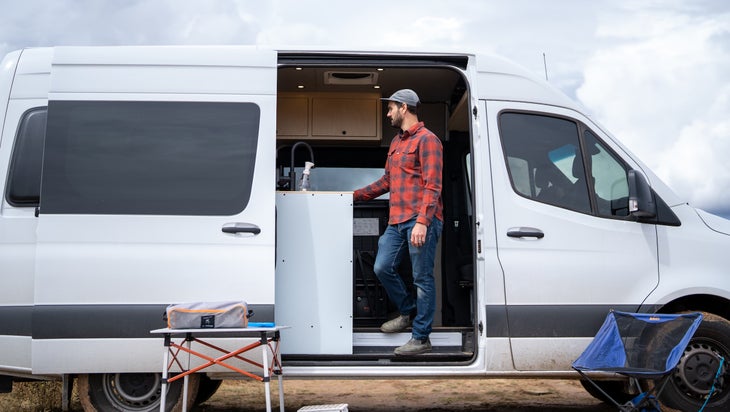
Join a Tool Library or Maker Space
I’m lucky to have a garage and an ever-growing collection of tools. But you don’t need either to build a camper. Many towns now have a community tool library which, for a nominal fee, can be your ticket to almost everything you’ll need for the project (an annual membership to the library at my local Habitat for Humanity Restore ran me $30). Not sure if there’s a library near you? Check out the online directory Localtools.org.
If you don’t have a dedicated workspace, or you need some guidance using power tools, look for a maker space. These community workshops are set up to support projects exactly like yours—for a monthly fee you’ll gain access to tools, training, and, most importantly, a community. “During the build we got tons of drop-ins from other members and volunteers excited to see what we were up to,” says Sasha McGhee, who built a camper van with her husband at the Fort Collins Creator Hub, a maker space in Colorado. “Often, those drop-ins helped us solve problems, like the time a retired electrical engineer soldered a missing microchip onto our Battery Management System for us.”
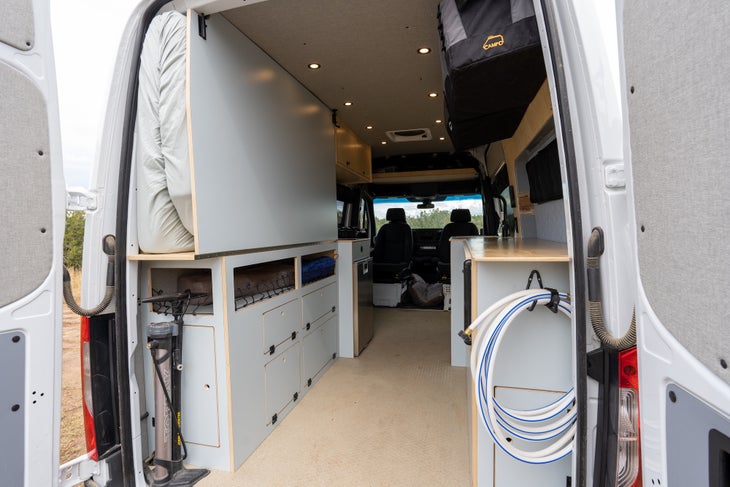
Don’t Shy Away from DIY Kits
It’s easy to adopt an overly orthodox approach to DIY and do everything from scratch. But knowing when to pull the trigger on pre-fabricated components can save you a ton of time—and, counterintuitively, money—while helping you achieve a better end result to boot. I hit the easy button on my wall and ceiling panels, opting for a CNC-cut Baltic birch from Titan DIY Kits. The package costs roughly $1,200 more than the materials alone would. That’s not an insignificant delta, but by avoiding the process of templating, scribing, cutting, re-scribing, and sanding each piece, I shaved about a week off of my build time (the flat-packed panels took about two hours to install). For those who can’t stomach the cost of the full kit, Titan DIY offers , too.
Rather than reinvent the wheel (and risk burning my new camper to the ground) I also opted for a hybrid DIY approach to my electrical system. I briefly considered an all-in-one product like the Goal Zero Yeti 6000x, but decided against it due to its limited customizability. Eventually, I sprung for a from Dakota Lithium specifically designed for off-grid van conversions. Could I have saved a few bucks piecing together a system on my own? Maybe. But this bundle, which pairs the brand’s batteries with everything I’d need to charge and monitor them, removed any question about whether my electrical components would be compatible with one another.
For the bits and bobs I needed to wire those components together, I purchased wiring kits complete with the correct gauge wire, wire lugs, terminals, and even heat-shrink from , an online shop and YouTube channel dedicated to helping people build safe, effective camper electrical systems (their is mandatory viewing). Once again, I could have saved some money by simply ordering the raw materials from Amazon—but the combination of convenience, speed, and peace of mind more than made up for the extra expense.
The bottom line is this: there have never been more or better resources for the aspiring adventure vehicle builder. With a bit of planning and determination, you can create the rig of your dreams. Beck, of Campo Vans, agrees. “Just start building and you’ll see, you can do it. It’s possible. We all start somewhere.”
